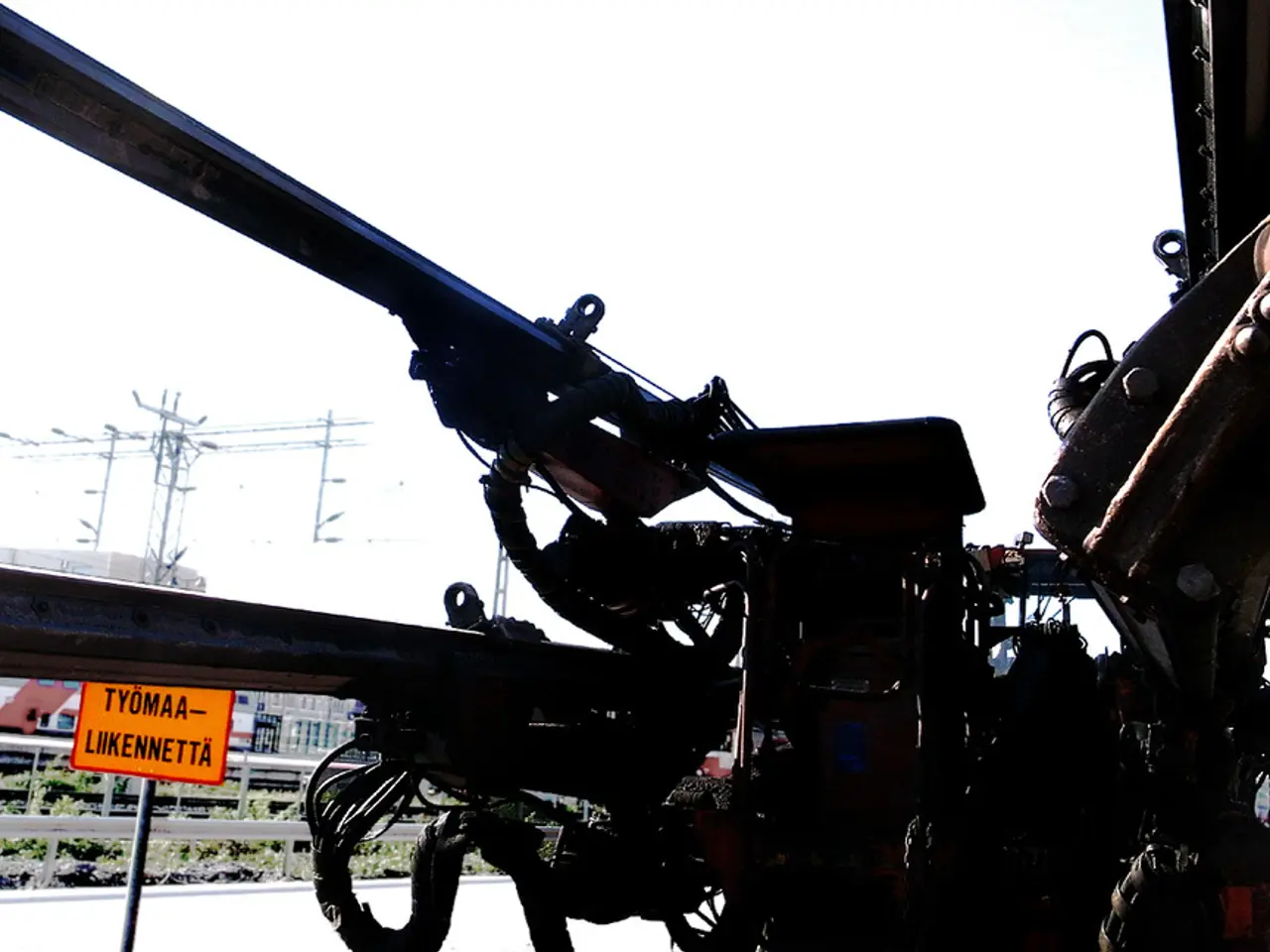Mine production bottlenecks for Rare Earths aren't solely confined to the extraction process. Various stages of refining and processing these valuable elements also present significant challenges.
In the world of technology, a group of 17 chemical elements known as rare earths play a crucial role. These elements, which include neodymium, dysprosium, terbium, yttrium, europium, samarium, and scandium, are essential for the energy transition, particularly for electric motors in cars and wind turbines. However, the control of these valuable resources is largely in the hands of one country – China.
According to recent data, China controls nearly 91% of the global refining production of rare earths, including most of its own production and large quantities of imported raw materials. In 2023, 98% of EU imports along the magnet value chain came from China, and China controls around 58% of raw material mining and 92% of production for permanent magnets. This near-monopoly has raised concerns about Europe's dependence on China for processing and production of critical intermediate products made from rare earths.
The systemic risk of trade disruptions has significantly increased over the years, particularly for industrialized countries like Germany, the USA, South Korea, or Taiwan, which have little processing capacity of their own and are heavily dependent on a few supplier countries for many intermediate products. Small disruptions in the middle processing stages can bring entire production lines to a standstill, even if raw materials are sourced from different sources.
To address this issue, Europe is pursuing several strategies. The main potential solutions involve a combination of diversification, domestic capacity building, recycling, and strategic partnerships.
One approach is expanding domestic mining and refining capacity. The EU’s Critical Raw Materials Act (CRMA) aims to achieve by 2030 about 10% domestic mining, 40% processing, and 25% recycling of critical materials, including rare earths. This involves prioritising strategic projects and investing over €5.5 billion to build vertically integrated supply chains within Europe.
Another strategy is recycling and circular economy. Europe is accelerating investment in rare earth recycling technologies to reclaim critical materials from used products, reducing the need for new raw material extraction.
Diversifying global supply chains through alliances is another key strategy. The U.S.-EU Metals Alliance coordinates efforts to reduce reliance on China by collaborating with allied countries with critical metal resources like Australia, Canada, and Namibia, aiming to create alternative sources and secure processing capacities outside China.
Innovation and alternative technologies are also being explored to reduce Europe's dependence on rare earths. Europe is exploring alternatives to rare earth dependency in clean mobility, such as low-emission internal combustion engines, hydrogen fuel cells, and simplified or magnet-free motor designs, which would reduce demand for rare earth magnets.
Diplomatic engagement and trade negotiations are also part of the strategy. The EU seeks to secure reliable access to rare earths through international engagement with China, aiming for stable export licenses and more balanced trade conditions, though this carries geopolitical risks.
Experts suggest several areas of action to reduce risk and open up new industrial opportunities, including building own processing facilities for intermediates such as magnets and special ceramics, diversifying supplier countries, strengthening recycling and alternative materials promotion, and long-term cooperation agreements with partner countries.
Despite these efforts, until alternative capacities scale up, Europe remains vulnerable to supply disruptions due to geopolitical tensions or export restrictions. The demand for permanent magnets, which contain up to 30% rare earths, is expected to increase from 5,000 tons in 2019 to up to 70,000 tons by 2030. An electric vehicle needs an average of three kilograms of permanent magnets, while a large offshore wind turbine can require up to six tons.
Industries particularly dependent on permanent magnets include the automotive industry, energy technology, defense industry, and medical technology. The absence of permanent magnets can bring entire production lines to a standstill. The European Raw Materials Alliance has tried to reduce dependence with the Raw Materials Act and various partnerships, but little has changed at the central weak point - processing.
Demand for rare earths will continue to rise in the coming years, driven by e-mobility, energy transition, and digitization. It is clear that addressing China's dominance in rare earths processing is a critical issue for Europe's high-tech future.
- The energy transition relies heavily on the rare earth elements used in wind turbines and electric motors, with China controlling the vast majority of refining and production.
- Europe seeks to minimize dependence on China by employing various strategies such as domestic mining and refining, recycling, global supply chain diversification, innovation, diplomacy, and partnerships.
- The Critical Raw Materials Act aims to achieve a 10% domestic mining, 40% processing, and 25% recycling rate of critical materials like rare earths by 2030, with a €5.5 billion investment.
- Europe is investing in rare earth recycling technologies to reduce the need for new raw material extraction, thereby promoting the circular economy.
- Strategic alliances are being formed with countries rich in critical metal resources, such as Australia, Canada, and Namibia, to reduce dependence on China.
- Alternative technologies for clean mobility, like hydrogen fuel cells and simplified motor designs, are being explored to reduce the demand for rare earth magnets.
- Diplomatic engagement and trade negotiations aim to secure reliable access to rare earths from China while maintaining balanced trade conditions.
- Despite these efforts, Europe remains susceptible to supply disruptions, especially considering the increasing demand for rare earths in the automotive industry, energy technology, defense industry, medical technology, e-mobility, and digitization.




